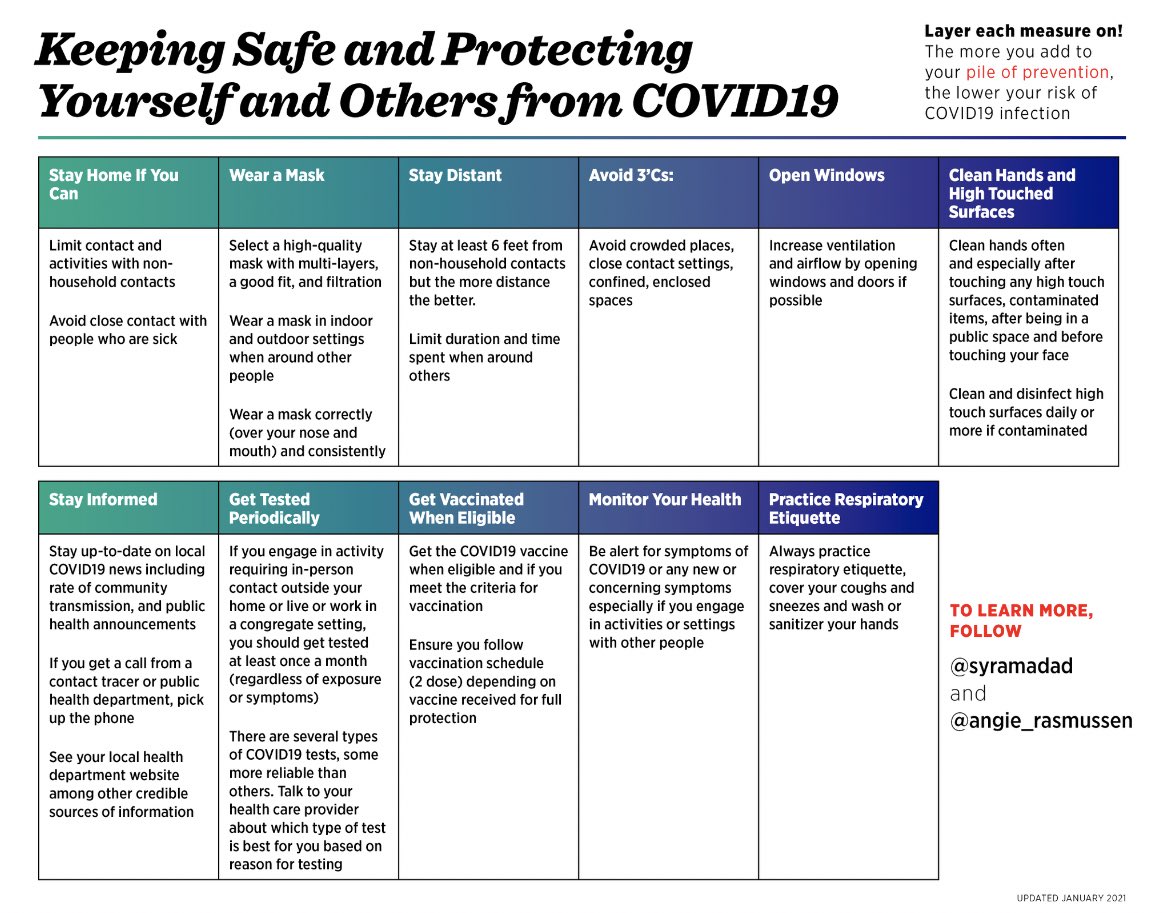So a lot of concern about this report in the @globeandmail that people are getting infected with B.1.1.7 in the course of a few minutes. This might be a good time to clarify some things about transmission in real life and the definition of "close contact" for contact tracing. https://twitter.com/BrendanNyhan/status/1356960850129661953
Here's the piece. It's mostly about the rapid spread through long-term care facilities. It also includes quotes suggesting that people are getting infected after a couple of minutes in a retail store. https://www.theglobeandmail.com/canada/article-covid-19-variant-in-barrie-outbreak-upends-conventional-wisdom-of
Over the weekend, a piece in the @WSJ came out saying that the NFL had data showing that transmission of any variant could occur in less time than 15 minutes.
All I have to say about this is, well...no shit. https://www.wsj.com/articles/super-bowl-nfl-covid-cdc-11612104460
All I have to say about this is, well...no shit. https://www.wsj.com/articles/super-bowl-nfl-covid-cdc-11612104460
Since the beginning of the pandemic, people have clung to the notion that close contact is defined by < 6 feet of distance and 15 minutes of exposure time as though it is a hard and fast rule.
But with virus transmission, boundaries of space and time are not set in stone.
But with virus transmission, boundaries of space and time are not set in stone.
As with so many other things in this pandemic, a normally continuous process has been misinterpreted as categorical. Viruses do not need 15 minutes to "warm up" and they aren't magically rendered non-infectious over the threshold of 6 feet.
So where did this definition come from? Well, you need to have a definition of what close contact is in order to do contact tracing. ANY kind of contact, no matter how incidental, would multiply contacts to the point that tracing becomes impossible.
Let's say you go into a grocery store with 50 other people for 30 minutes. During that time, you run into someone you know and chat withing 6 feet for 15 minutes and then later find out you're positive for SARS-CoV-2.
Using this definition, contact tracers will call the person you chatted with. Let's say then you went to your 10-person office and were around 5 of your coworkers within 6 feet for a longer period of time. No problem, contact tracers call another 5 people.
Now let's say the definition of close contact is being ANY distance from people for ANY length of time. Suddenly contact tracers are calling 60 people. If transmission overall is low, that's still no problem. But that's not the situation in many places, including the US & Canada.
With hundreds or thousands of new COVID cases per day, this quickly becomes an insurmountable task just based on the numbers. With 100 cases/day in a community, this becomes 6000 contacts. With 1000 cases/day, it's 60,000. And contact tracing is more than just calling contacts.
So add to that the challenges in contact tracing: people don't always remember or know all their contacts or accurately recall where they were and when and for how long. Valid concerns about privacy may also make people reluctant to share this information.
So, it's not perfect, but close contact is defined to allow contact tracers to follow up on exposures that are most likely to lead to infection. Defining close contact for this purpose is NOT, however, a hard line over which transmission cannot occur.
Transmission is situational. If you are exposed to enough virus by the proper route, you can become infected. It can take less than 15 minutes to be exposed to enough virus. Depending on conditions, you can be exposed to an infectious dose over 6 feet away.
This is true for all viruses, not just SARS-CoV-2, and not just B.1.1.7 or other variants. So we should not regard definitions of contact for tracing to be the definition of exposure risk as we live our lives. The conflation of these two is one of many communication failures.
Now, with regard to B.1.1.7 being transmitted "faster", that's really hard to say. We only know that it's more transmissible, but not the mechanism. In other words, we don't know HOW it is more transmissible.
There are several possibilities.
1. More/longer viral shedding (exposure to more virus in shorter period of time)
2. More infectivity (lower infectious dose required to establish an infection)
3. More stability (virus hangs around longer in environment, thus more virus)
1. More/longer viral shedding (exposure to more virus in shorter period of time)
2. More infectivity (lower infectious dose required to establish an infection)
3. More stability (virus hangs around longer in environment, thus more virus)
(These are very vague and not comprehensive because character limits).
Increased transmissibility could be the result any or all of these, but all could explain how people are being infected "faster". Then again, it could also be situational.
Increased transmissibility could be the result any or all of these, but all could explain how people are being infected "faster". Then again, it could also be situational.
If you are in a poorly ventilated, crowded store and there's lots of SARS-CoV-2 circulating in the community, odds are good that you will be at a much higher exposure risk in this environment. And we already know that LTCs are tinder boxes waiting to ignite when it comes to COVID
So my take home is: yes, B.1.1.7 is more transmissible & we should be concerned about it. Yes, 6 ft/15 min is not unshakeable dogma with regards to transmission and you shouldn't treat it as absolute. Fine (but imperfect) for contact tracing, not as useful for real life.
By understanding the additive nature of risk reduction, you can reduce your own exposure risk in any situation. Dr. @syramadad and I put together this handy chart to help! Try to apply as many of these as possible rather than relying on categorical rules about time and distance.

 Read on Twitter
Read on Twitter


